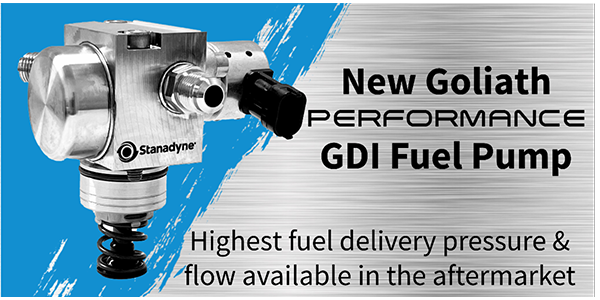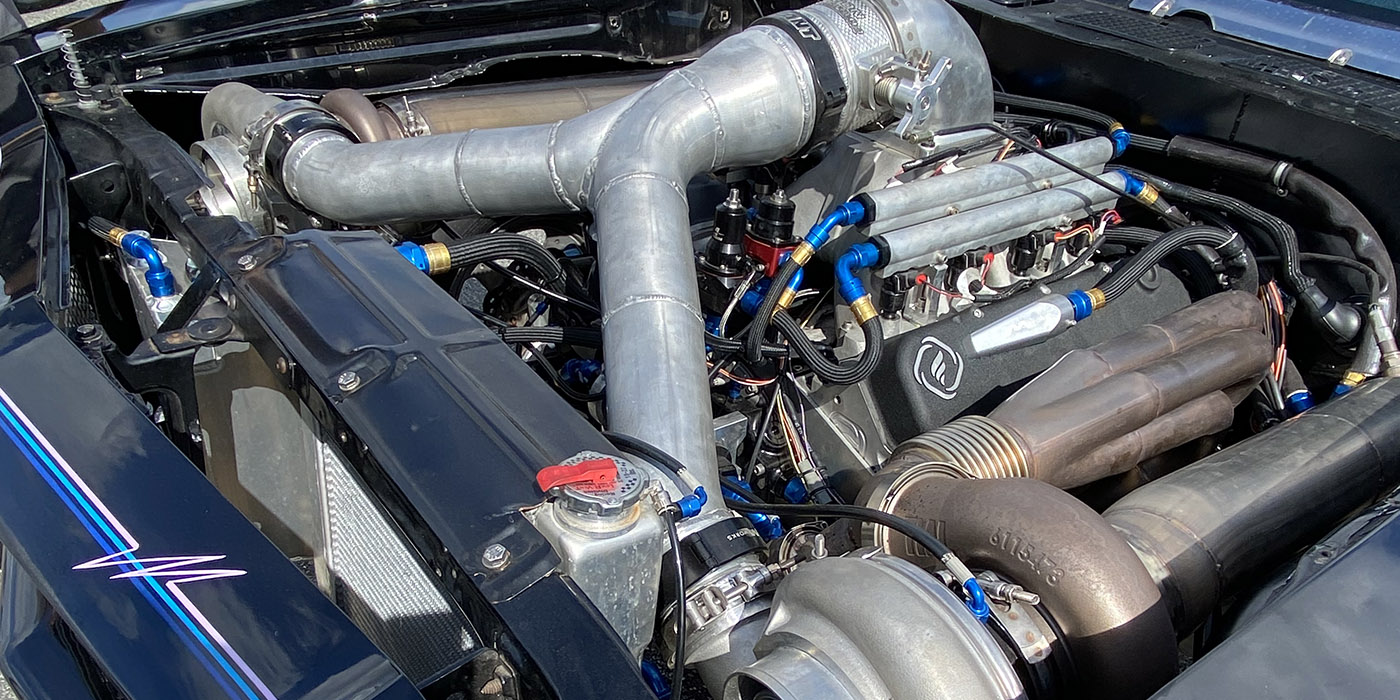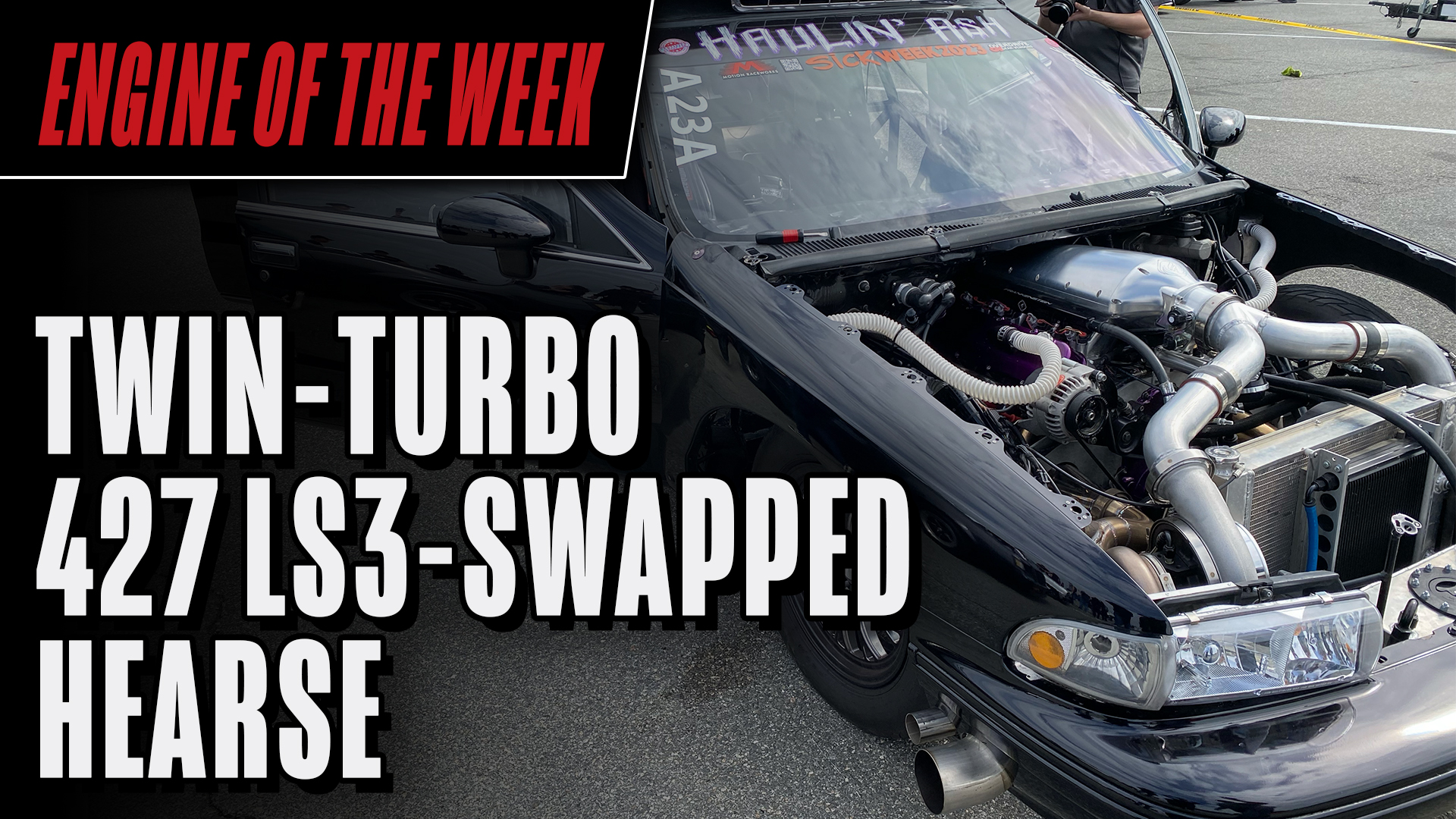
Gasoline Direct Injection or GDI has seen rapid adoption by the automotive industry over the last several years in lieu of multipoint fuel injection systems due to advantages in fuel efficiency and reduced emission levels. However, now that GDI has been in engines for several years, engine builders are seeing issues caused by these systems as well as many facts and fictions surrounding why these problems exist and how to solve them.
Engine Builder recently caught up with Matt Dickmeyer of Dickmeyer Automotive Engineering in South Whitley, IN to understand what he has personally experienced regarding GDI and how he has solved some of the issues it causes in engines.
“The main reason OEs are going with direct injection is because of what I would consider to be unrealistic MPG requirements by the government,” Dickmeyer says.
To meet these requirements, OEs are building smaller engines with turbochargers. A smaller engine obviously will have a smaller bore, which is easier to maintain or to achieve high volumetric efficiency (VE).
“Since you simply can’t get every bit of air into the cylinder by itself without extremely high RPM, they’re going with turbocharging, which can make a small displacement engine have the power of a large displacement engine,” Dickmeyer says. “However, with any forced induction or power adder, you actually have to have a sacrificial percentage of fuel injected into the cylinder that actually does nothing for creating power. It’s what I call sacrificial simply because its function is to control pre-ignition and detonation, cool combustion temperatures and so on.”
GDI Issues
From what he has learned through dyno experiences, Dickmeyer says liquid fuel in the cylinder is damaging. Many people will mistakenly say that you’re looking for where the fuel vaporizes, but that’s not really true either because vapor is a liquid turning into gas. What you want, he says, is atomization.
“You want small droplets of fuel to intertwine with air,” he says. “What happens with the direct injection engine is you’re squirting that liquid fuel into the cylinder, it gets on the cylinder walls and absorbs into the oil. What happens during the combustion event is the oil that is on the cylinder walls contains gasoline so it ignites and it burns off. That’s why a lot of direct injection engines are experiencing significant oil consumption and flash burns in the cylinder.”
An issue known as Low Speed Pre-Ignition (LSPI) typically occurs in vehicles with GDI engines. Detonation typically occurs in two areas – in and around the vicinity of the sparkplug, or at the perimeter of the cylinder in the crevice clearance above the top ring between the cylinder and the crown of the piston.
“What I found to be the problem is that fuel injection, especially direct injection, has a very poor accelerator pump function where as a carburetor has an accelerator pump or two,” Dickmeyer says. “So when you are at a high load, low speed operation of the engine and depress the throttle slowly it squirts additional fuel through the accelerator pumps. Fuel injection doesn’t really have that function as well. What happens under this low speed, high load situation is you get bits of carbon and soot that break off from the valves and in the combustion chamber which makes its way to the cylinder walls where it sticks to the oil and the fuel that’s on the cylinder walls. When the piston moves up it loads the crevice clearance with carbon, and those little groupings of carbon and soot get diluted with fuel and oil which then smolder and act like a glow plug or a wick to cause pre-ignition.”
With direct injection you don’t necessarily have to inject the fuel in the cylinder on the intake stroke like you would with a multipoint system or a carburetor. With direct injection you can introduce fuel into the cylinder when it’s on the compression stroke.
“Smaller engines have a lower brake-specific fuel consumption simply because they can achieve full volumetric efficiency better than a big bore engine,” he says. “With the designs of the tops of the pistons and the designs of the combustion chambers, they’re really efficient so you can actually run higher compression with a multi-valve engine simply because the layout of the combustion chamber is super efficient with a centrally located sparkplug. You can actually operate a turbo engine at a brake-specific fuel consumption that would be normal to a naturally aspirated engine.”
You can run turbocharged engines with less than 0.5 lbs. per hour per horsepower, according to Dickmeyer. Typically with a turbo or any kind of forced induction you’re well above 0.5 lbs., and closer to the 5/8 a pound per hour per horsepower range.
“There’s a saying in the carburetor world that ‘lean is mean,’” Dickmeyer says. “In the direct injection engine where you have a rich condition and a lean condition at the same time, it kind of puts the perfect storm together for disaster to happen within the cylinder. If you could put a probe in the chamber of a direct injection engine you have different air fuel ratios within the cylinder. You have a rich condition towards the center of the cylinder and you’ll have a lean condition towards the outside perimeter of the piston.”
GDI Design Flaws
According to Dickmeyer, when you look at how some of these GDI engines are designed it’s almost like the crankcase ventilation system was an afterthought.
“On the EcoTec GM 2.4L engine, the inlet where the plastic intake manifold meets the heads for the crankcase ventilation system is down in a low spot that you would normally see an oil drain back passage through,” Dickmeyer says. “So you get oil that as it works its way through the engine and comes up to the top end and then works its way back down and falls to these low spots. That’s where a lot of these engines have the vacuum source for the crankcase ventilation system, so they’re sucking in oil.
This issue causes droplets of oil to run through the intake manifold, the intake port, and in the combustion space, which can lead to pre-ignition as well.
The most well-known issue that direct injection has is the injector is located behind the valve instead of in front of the valve so you don’t have that mechanical cleaning of the backside of the intake valve that you would on a multipoint injection.
“Your valves are running really hot,” Dickmeyer says. “A lot of people think that when your valve is open and the fresh air passes over it, that’s what cools the valve. Your valve really cools when it’s in contact with the seat through heat transfer. The water jackets around the seat pull the BTUs out of the valve. These valves are running hot, so when oil droplets come through the intake port and pass through the cylinder head they’ll stick to the backside of the intake valve. That starts to build up layers and it’s not just a layer of ash or goo, it almost turns into something like a lava rock and it will be surrounded with a greasy slime, which makes it worse and traps dirt.”
These droplets of oil and small amounts of dust and dirt make their way through the intake ports, which are coated with sticky oil and creates a plaque layer that builds up thicker and thicker and thicker.
In fact, Matt actually had a customer bring in a low-miles Chevy Equinox with engine failure due to this build up. The customer gave Dickmeyer the go ahead to re-engineer and tackle the issues. While there was nothing Matt could do to change the issue from happening due to GDI, there were things he could do to try to allow the engine to operate better in the GDI environment.
“I got a lot of experience and spent seven months to get it right,” he says. “The Equinox was incorrectly diagnosed by a GM dealer as needing a fuel pump. It had a really bad rich condition and a lean condition and so on. I ripped the head off of it and put it on the flow bench and at just a half-inch lift it flowed almost half what a clean port did. The PCM cannot make up for that loss of airflow, so you’ll have a really bad rich condition.”
When carbon builds up on the backside of the valves, it works like an insulator not allowing the valve to cool down properly when it’s in contact with the seat. That causes the valves to get red hot and the valve heads to pop off resulting in a dropped valve down in the cylinder.
“You’ll bash a hole in the piston and jam a broken spark plug up into the combustion chamber,” Dickmeyer says. “A lot of remanufacturing companies are having major problems with this. They give their product a 100,000-mile warranty and it comes back with 28,000 miles on it and the engine is trash. A lot of these reman shops won’t mess with DI engines because they’re going to own them forever. They’re never going to make any money on them because they’re just going to continually come back.”

GM has seen its fair share of issues related to GDI and, according to Dickmeyer, OEMs like Kia, Hyundai and Ford have too.
“With Ford, the problem is there, but it’s not destroying the engine like it is with GM,” he says. “That might be because Ford ran the V6 EcoBoost engines through the Baja 1000 and they essentially beat the crap out of them and I think they put a little bit more engineering into the engine, so it’s able to shrug off these issues a little bit easier than GM engines.”
Some of these vehicles are developed on the racetrack such as GM running its GDI Corvettes in IMSA races, which doesn’t translate to production vehicles quite the same.
“You’re not seeing this carbon buildup on race engines as much because they’re essentially wide open all the time,” Dickmeyer says. “The port velocity through the engine through the intake port and through the exhaust port is so fast that a lot of this stuff just doesn’t have the time to occur. It’s really the worst on a production vehicle where it sees a lot of throttle and idle time.”
GDI Solutions
There are several products on the market that claim to clean the build up that accumulates on the intake port caused by GDI issues. However, according to Dickmeyer, a majority, if not all of these products, are false. While these products may help in some small way, they by no means solve the issue or completely rid the intake port of the build up. Dickmeyer had to go through much, much more than a swab or an additive to solve the build up issue with the Chevy Equinox.
“When we pulled this engine apart I tried cleaning the head with a conventional parts washer and it wouldn’t even touch it,” he says. “I took it to a friend of mine who has a big, high-pressure blast cabinet and the solvent that he uses in his blast cabinet would eat a piston down to nothing if you let it run over the weekend. We put the cylinder head in his blast cabinet for eight hours and it didn’t touch it.
“Another friend of mine has a pressure washing company so he’s got one of those great big 5,000 PSI pressure washers with the heater on it so you can actually have steaming hot water. That wouldn’t touch it. It would just clean little areas. I literally had to port the cylinder head and on my porting bench, and porting and grinding this material out by hand. Like I said, it’s like a lava stone.”
Once clean, Dickmeyer contacted a company called Line2Line that he met through the PRI show to help him develop a Teflon-type coating. They engineered some coatings that would work under high temp but still stay adhered to the surface.
“We coated the backsides of the valves,” Dickmeyer says. “I then added an oil separator to the intake system and we coated the entire skirt of the pistons with PTFE moly coating. We coated the top and the underside with a heat barrier and at 40,000 miles we pulled the intake manifold off this vehicle and there was little to no build up. I’ve seen these vehicles with less than 40,000 miles and it’s not starting to build up, the engine is junk by then.”
Education
Another part of the problem surrounding GDI engine issues is that no one is educating the consumer about these problems or ways to mediate them with simple things like proper oil maintenance and change intervals.
“We put the oil in the vehicle that the manufacturer requires, not the oil that you want,” Dickmeyer says. “That’s been our policy. What I find disturbing is I try to explain to people why they need a specific oil and they don’t get it or think that I’m overcharging because they never paid more than $22 for an oil change at Jiffy Lube. I try to explain that I’m not overcharging, it’s that everyone else has been charging too little. People aren’t being educated on oil. It’s a lubricant, a coolant, a hydraulic fluid and a dispersant. It has so many functions other than just lubricating.”
Nobody has really generated any kind of information to give to the consumer as to why you need to change your oil more regularly. Instead, it’s turned into a ‘give the people what they want’ situation.
“With today’s ultra tight clearances, things just jam up when you change your oil too late,” he says. “There are manufacturers out there recommending 10,000 to 12,000-mile oil intervals on a direct injection engine. And you get TV commercials saying change your oil once a year.”
Chemically, oil after a year in a vehicle may have lubricant value, but the big problem is the dirt that’s in suspension that sticks to the oil. When you’re changing your oil you’re flushing out the dirt from the crankcase.
“After a year, it’s got a long time to be in there, and with the inadequate PCV systems, I’m seeing a lot of condensation or a foamy froth that builds up at the top end of the engine,” he says. “That gets up in the valve covers, around the cam journals and bearings, in the main web, and it fights oil flow.”












